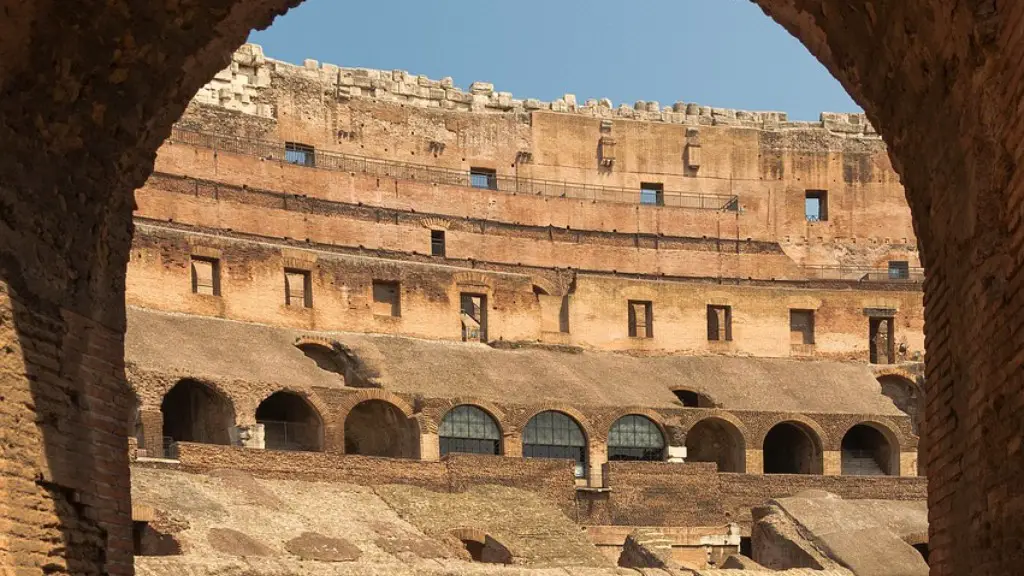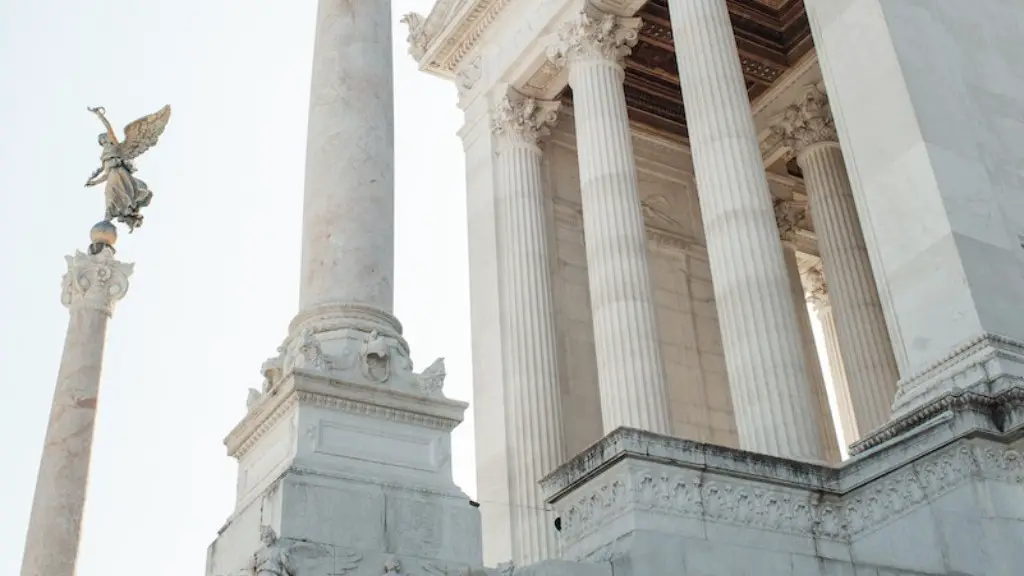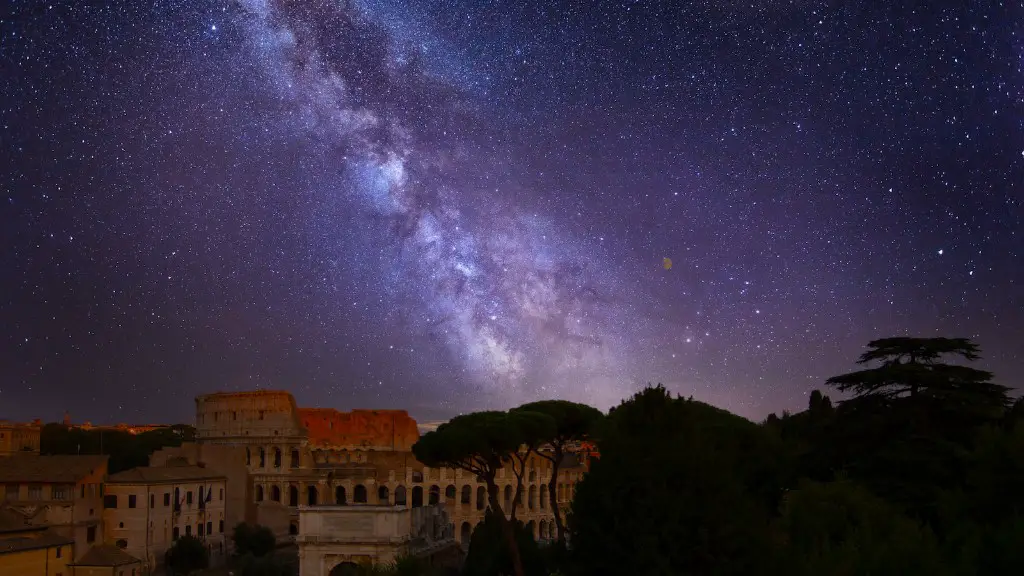At its peak, the Roman Empire was an icon of leadership and military conquest, covering much of Western Europe and parts of North Africa and Asia Minor. Hundreds of years after its foundation, Ancient Rome would come to be known as one of the greatest powers of its time. But, as with all great empires, Rome eventually fell. While there are numerous theories attempting to analyze the primary cause of Rome’s decline, there seems to be a consensus that the decline was the result of a complex system of interconnected issues.
The first major reason for the fall of Rome is said to be inflation caused by the government’s reckless spending. By spending on luxurious lifestyles, huge public works projects and extensive military campaigns, the government had caused prices to soar and wages to fall. This created economic instability for the people and would undoubtedly play a role in destabilizing the empire.
The second-largest factor that contributed to Rome’s decline is regarded as a wave of plagues, disease and famine that swept across the Roman world. Rome’s population dropped drastically, leading to a decline in the army and soldiers needed for the empire’s defense and conquering. Furthermore, due to the weakened population, Rome was forced to accept travelers from surrounding regions, resulting in potential problems in terms of cultural assimilation.
The third and perhaps most significant factor was attributed to Rome’s political structure. Perhaps seeing the over-expenditure, inflation and weakened population, it seems that Rome’s emperors began to take advantage of their positions by becoming increasingly autocratic. This resulted in political unrest, rebellions, and corruption that ultimately weakened their empire’s abilities and finances, leading to its decline.
In the modern day, the decline of Ancient Rome continues to be a subject of debate and research. Experts within the field of history recognize that the decline of Rome was likely caused by a multitude of factors, from the economic to the political. In addition, some scholars have suggested that the decline of Rome was most likely the result of a “perfect storm”, with numerous underlying and interconnected events conspiring to bring about the empire’s eventual downfall.
Internal Disunity
A fourth factor often cited as a primary reason for the fall of the Roman Empire was an overabundance of internal divisions, resulting from religious and political differences among the people. The emergence of competing leaders, clashing religious beliefs, and other social and political unrest created an atmosphere of dissent throughout the empire that further weakened its unity and caused it to go into decline.
Leading up to Roman downfall, the internal political threats were so strong that the Senate, a long-time guarantor of Rome’s stability, was eventually abolished. This created political and economic instability, leading to a period of civil wars and fragmentation that would eventually culminate in the downfall of the Roman Empire.
Moreover, the internal divisions among the imperial elite and the people (in terms of religion and political opinion) are said to have prevented the effective resolution of countless issues, leading to further chaos and ineffectiveness from the government. Such internal disunity also had a profound impact on the Roman army, removing the sense of solidarity and making it less capable of facing external threats.
In effect, it is easy to see why internal disunity is often cited as a major contributing factor to the Roman Empire’s downfall. With numerous competing interests and a lack of consensus, Rome’s government was no longer able to govern effectively, leading to its eventual downfall.
Rise Of Barbarian Tribes
The fifth and final factor commonly cited in the fall of Rome is the rise of barbarian tribes. These nomadic tribes, mostly comprising of Germanic warriors, had long been a threat to the Roman Empire due to their frequent raids throughout Roman territory. This threat intensified during the 5th century, when many of the tribes began to conquer and settle in territories once belonging to Rome.
Not only did the barbarian raids and encroaching settlements create serious economic and political detriments, they also brought in different cultural norms and beliefs, which threatened the unity of Rome. Such challenges would linger for many years and would ultimately contribute to Rome’s fall.
What’s more, the barbarian tribes were also aided by a weakened Roman army, which was often unable to repel the incoming forces or protect citizens from potential danger. Due to this, the lands of Rome were eventually overrun and conquered by the barbarian tribes, completely altering Rome’s territory and signaling its eventual downfall.
Legacy
Although a major contributing factor to Rome’s eventual downfall, the barbarian invasion also had its silver lining. Through cultural exchange and intermixing, the barbarian tribes had brought in new technologies, new beliefs, new ways of life, and new sources of labor, which ultimately proved beneficial for Rome in the long run.
Moreover, new military tactics and strategies were introduced through the barbarian tribes, which would soon become essential components of Rome’s defense and conquest. Such innovations would be key to Rome’s recovery and subsequent success, ultimately emboldening its legacy for many centuries more.
In essence, it can be argued that the barbarian invasion could have potentially been a blessing in disguise, allowing Rome to continue its legacy and remain an integral part of the Western world.
Climate Change
A sixth, and less frequently discussed, factor in the collapse of Rome is believed to be climate change. While much of the recorded evidence of climate change in the area is highly speculative, there is some archaeological evidence that points to potential climate shifts towards the end of the Roman Empire.
For instance, studies have shown that Bronze Age climate changes played a role in agricultural problems in Ancient Rome, leading to crop failures and famine, which would ultimately affect the empire in a number of ways. Furthermore, it is speculated that a shift in weather patterns could have caused massive flooding in Rome, with horrible repercussions for its citizens and infrastructure.
Whether climate change was a primary contributing factor to Rome’s demise remains up for debate, but it is nonetheless an important factor to consider in terms of assessing the complexity of Rome’s downfall.
Modern Relevance
The events surrounding the fall of Ancient Rome remain highly relevant and highly studied in the modern-day. Even in the 21st century, the lessons and warnings of Rome’s ultimate demise remain significant and valuable in many major areas, from government and military to economics, science, and technology.
By learning and applying the lessons of Rome’s downfall, we can avoid such a catastrophic event happening in our own times. Moreover, by recognizing the faults and contradictions of Ancient Rome, we can become more effective and efficient in our own societies, bettering our living conditions and avoiding a similar fate.




